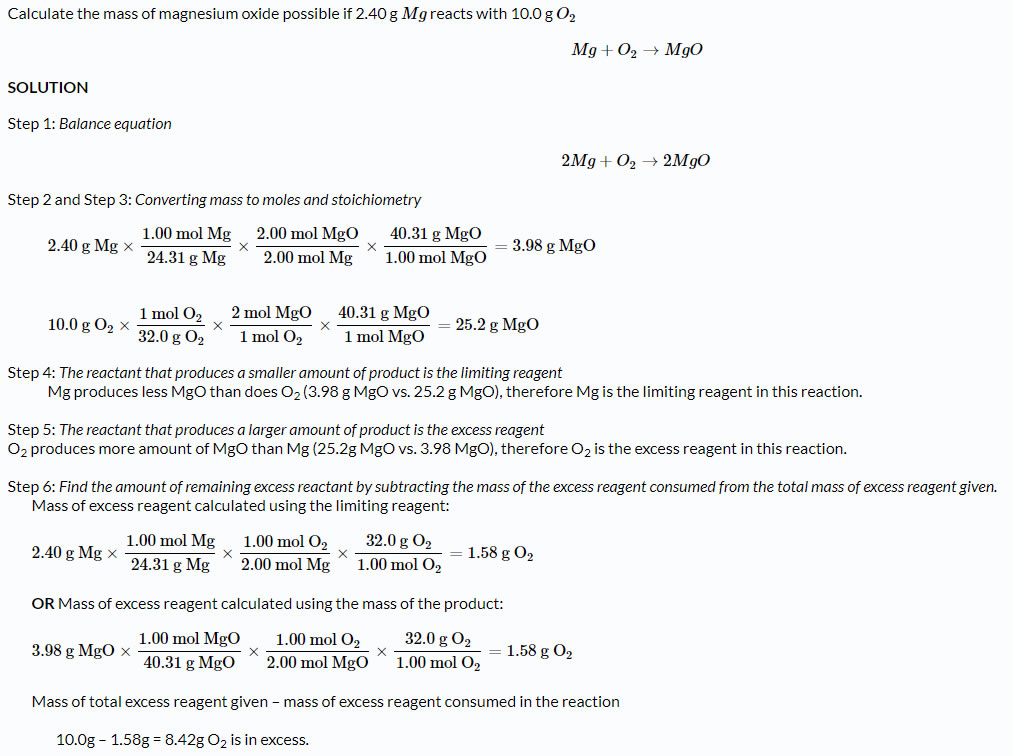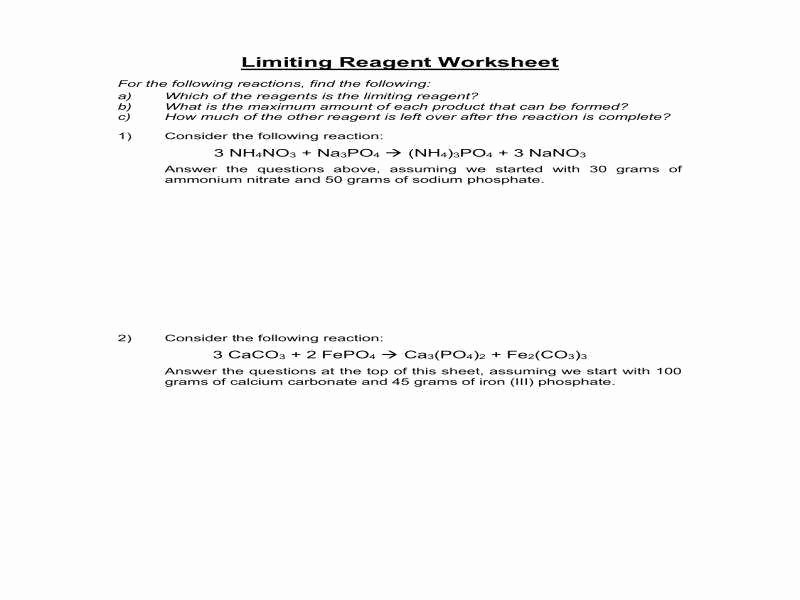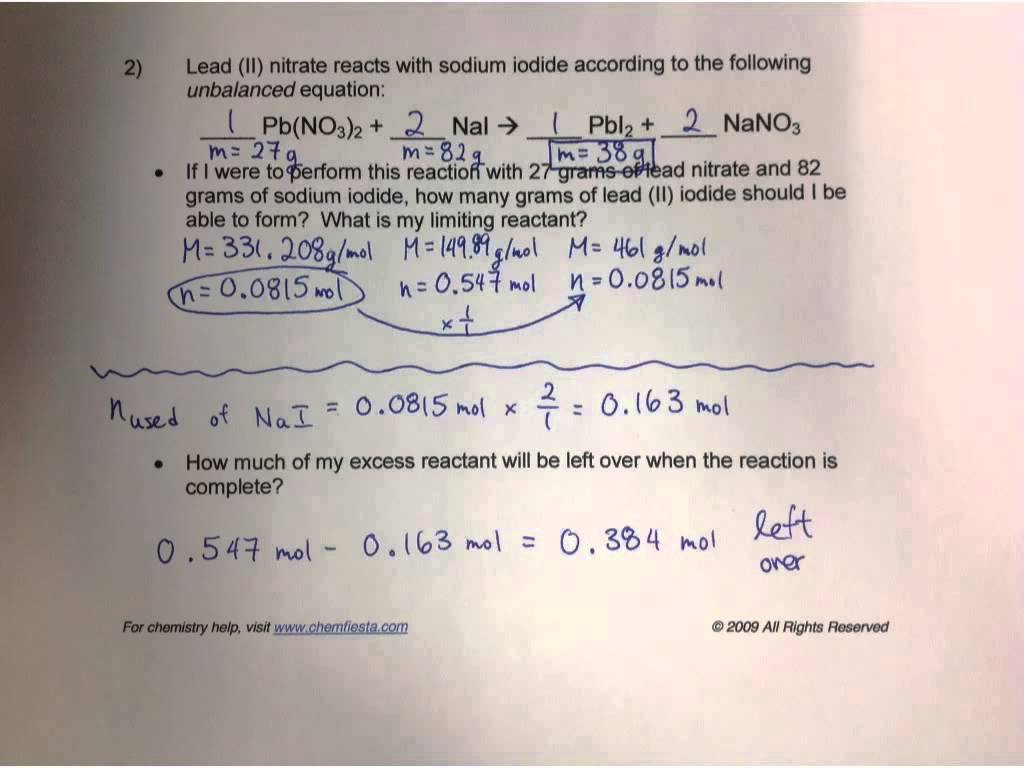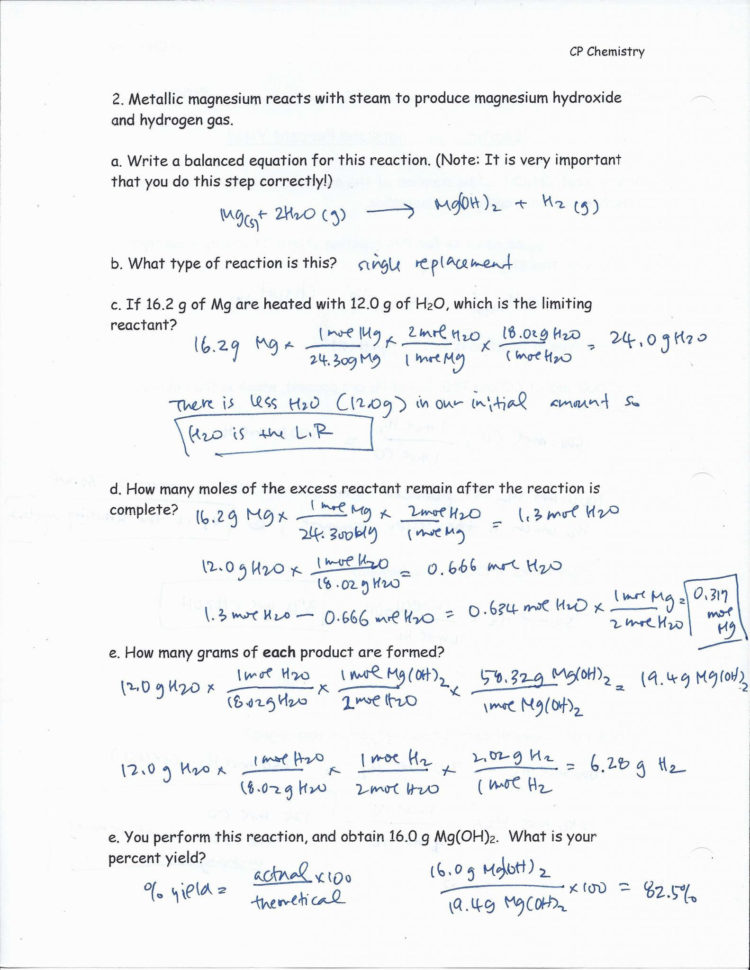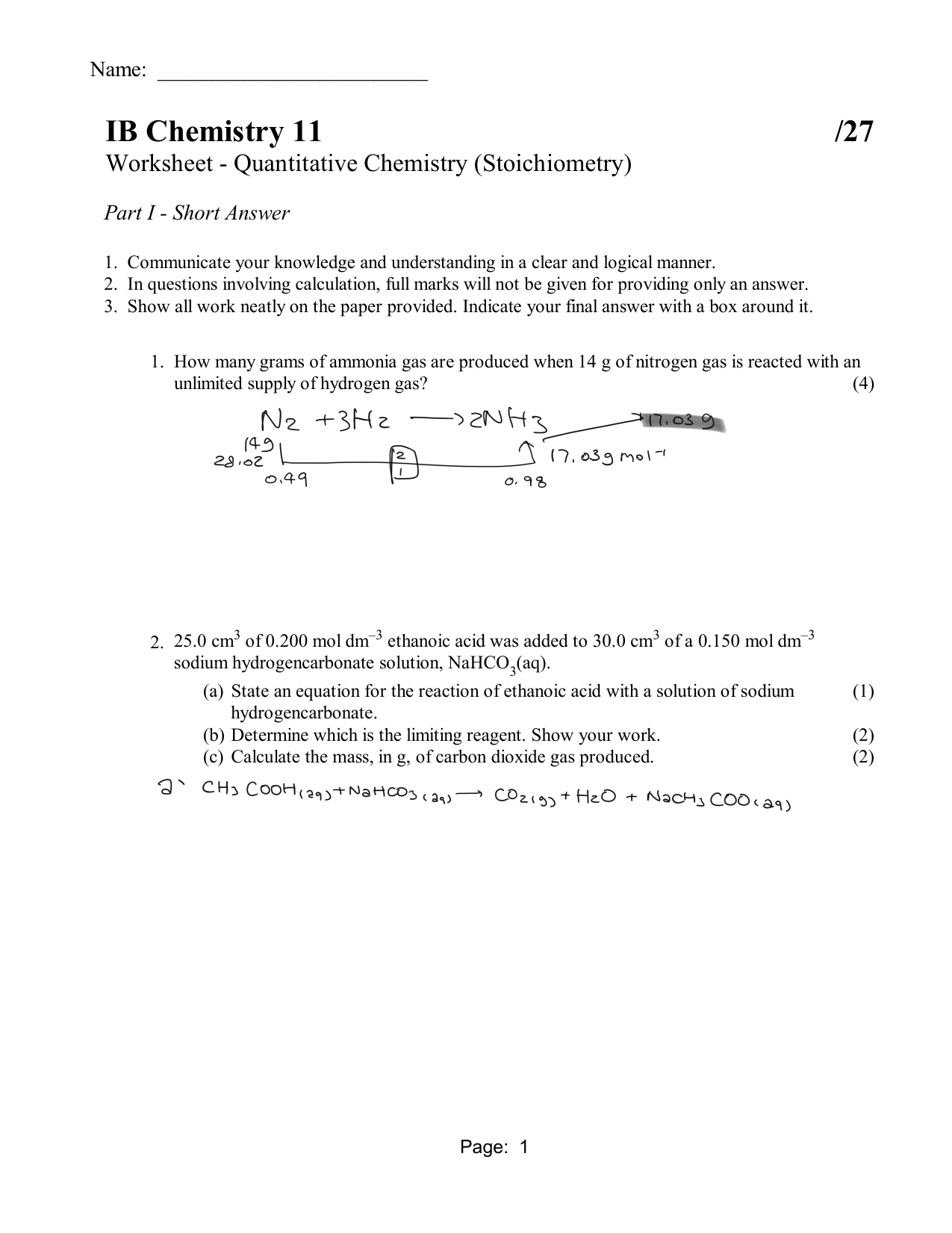Stoichiometry Limiting Reagent Worksheet Answers
Stoichiometry Limiting Reagent Worksheet Answers - This worksheet allows students to practice using stoichiometry to solve limiting reagent problems. Nan3(s) → na(s) + n2(g). Automotive airbags inflate when sodium azide, nan3, rapidly decomposes to its. Web the principles of stoichiometry and limiting reagents will be used to predict the amount of product that should be produced when mixing two solutions to produce an insoluble. Web this worksheet allows students to practice using stoichiometry to solve limiting reagent problems. Web if you have more than you need, this is the reagent in excess (xs). Students will need a good understanding of stoichiometry and limiting. Web stoichiometry/limiting reagent practice ap chemistry (practice, practice, practice. Limiting reagent worksheet #1 1. Nitrogen is the limiting reagent. .show all work (including balanced equations). All of the questions on this worksheet involve the following reaction: Web this problem has been solved! Web this worksheet allows students to practice using stoichiometry to solve limiting reagent problems. You have 0.20 mol of \(ca(oh)_2\) and you need. Nitrogen is the limiting reagent. Web this problem has been solved! The smaller of these two answers is correct, and the reagent that leads to this answer is the limiting reagent. It will be based on the mass of the reactants present, and on the stoichiometry of the reaction. All of the questions on this worksheet involve the following reaction: Web this worksheet gives them two measurements. .show all work (including balanced equations). This worksheet allows students to practice using stoichiometry to solve limiting reagent problems. All of the questions on this worksheet involve the following reaction: The smaller of these two answers is correct, and the reagent that leads to this answer is the limiting reagent. Web this worksheet gives them two measurements. This worksheet allows students to practice using stoichiometry to solve limiting reagent problems. Students will need a good understanding of stoichiometry and limiting. Web if you have more than you need, this is the reagent in excess (xs). You'll get a detailed solution from a subject matter expert that helps you learn core. When copper (ii) chloride reacts with sodium nitrate, copper (ii). You'll get a detailed solution from a subject matter expert that helps you learn core concepts. You have 0.20 mol of \(ca(oh)_2\) and you need. .show all work (including balanced equations). Web stoichiometry/limiting reagent practice ap chemistry (practice, practice, practice. The smaller of these two answers is correct, and the reagent that leads to this answer is the limiting reagent. Web stoichiometry/limiting reagent practice ap chemistry (practice, practice, practice. .show all work (including balanced equations). If you have less than you need, this is the limiting reagent (lr). Nitrogen is the limiting reagent. Web stoichiometry/limiting reagent practice ap chemistry (practice, practice, practice. Web the principles of stoichiometry and limiting reagents will be used to predict the amount of product that should be produced when mixing two solutions to produce an insoluble. One molecule of hydrogen remains. Nitrogen is the limiting reagent. Web this problem has been solved! The smaller of these two answers is correct, and the reagent that leads to this answer is the limiting reagent. The molar ratio of importance is nitrogen to hydrogen. Web limiting reactants and solution stoichiometry. If you have less than you need, this is the limiting reagent (lr). Web stoichiometry/limiting reagent practice ap chemistry (practice, practice, practice. If you have less than you need, this is the limiting reagent (lr). We are now ready to pull everything we know about reaction stoichiometry together, and answer the question: The smaller of these two answers is correct, and the reagent that leads to this answer is the limiting reagent. The molar ratio of importance is nitrogen to hydrogen. Nan3(s). One molecule of hydrogen remains. Web limiting reactants and solution stoichiometry. Limiting reagent worksheet #1 1. Web stoichiometry/limiting reagent practice ap chemistry (practice, practice, practice. Students will need a good understanding of stoichiometry and limiting. Limiting reagent worksheet #1 1. Web this worksheet allows students to practice using stoichiometry to solve limiting reagent problems. This worksheet allows students to practice using stoichiometry to solve limiting reagent problems. The smaller of these two answers is correct, and the reagent that leads to this answer is the limiting reagent. Students will need a good understanding of. The molar ratio of importance is nitrogen to hydrogen. .show all work (including balanced equations). We are now ready to pull everything we know about reaction stoichiometry together, and answer the question: When copper (ii) chloride reacts with sodium nitrate, copper (ii). All of the questions on this worksheet involve the following reaction: It will be based on the mass of the reactants present, and on the stoichiometry of the reaction. Web this worksheet gives them two measurements. Automotive airbags inflate when sodium azide, nan3, rapidly decomposes to its. Web the principles of stoichiometry and limiting reagents will be used to predict the amount of product that should be produced when mixing two solutions to produce an insoluble. Web this problem has been solved! .the answers are on the. You'll get a detailed solution from a subject matter expert that helps you learn core concepts. Web stoichiometry/limiting reagent practice ap chemistry (practice, practice, practice. Students will need a good understanding of stoichiometry and limiting. If you have less than you need, this is the limiting reagent (lr). You have 0.20 mol of \(ca(oh)_2\) and you need. Web this problem has been solved! .the answers are on the. Limiting reagent worksheet #1 1. Nan3(s) → na(s) + n2(g). Web the principles of stoichiometry and limiting reagents will be used to predict the amount of product that should be produced when mixing two solutions to produce an insoluble. If you have less than you need, this is the limiting reagent (lr). Web limiting reactants and solution stoichiometry. Students will need a good understanding of. Web if you have more than you need, this is the reagent in excess (xs). Web grams of aluminum hydroxide. Web this worksheet gives them two measurements. The smaller of these two answers is correct, and the reagent that leads to this answer is the limiting reagent. .show all work (including balanced equations). Students will need a good understanding of stoichiometry and limiting. This worksheet allows students to practice using stoichiometry to solve limiting reagent problems.Stoichiometry Limiting Reagent Worksheet Answers Amwintersun
Stoichiometry Limiting Reagent Worksheet Answers Amwintersun
50 Limiting Reactant Worksheet Answers Chessmuseum Template Library
Stoichiometry Worksheet 2 Answers richinspire
Limiting Reactant Worksheet Answers Ivuyteq
Stoichiometry Problems Worksheet 1 Answers Worksheets
Stoichiometry Worksheet Answer Key —
Gas Stoichiometry Limiting Reagent Worksheet Sustainability
Stoichiometry Worksheet Answer Key Unique Chemistry 12 Mr Nguyen S
Stoichiometry Limiting Reagent Worksheet Answers —
It Will Be Based On The Mass Of The Reactants Present, And On The Stoichiometry Of The Reaction.
Web Stoichiometry/Limiting Reagent Practice Ap Chemistry (Practice, Practice, Practice.
Automotive Airbags Inflate When Sodium Azide, Nan3, Rapidly Decomposes To Its.
All Of The Questions On This Worksheet Involve The Following Reaction:
Related Post:

